
Common diseases of nectarines
| Title | Released | Details |
|---|---|---|
| Common diseases of nectarines.pdf | 2024 | PDF, 669.2 KB |
Bacterial canker
Bacterial canker is a major disease of stone fruit that can cause serious yield and tree losses. This disease can affect blossoms, leaves, fruit, trunks, branches and shoots. Infected trunks and branches show gum exuding from infected areas. New shoots wilt, turn brown and die from the tips (Figure 1).
Bacterial canker is favoured by wet and windy conditions before and during leaf fall, and damage to limbs caused by hail, farm machinery or pruning.
To prevent bacterial canker:
- avoid pruning in early winter, when canker is most active. It is best to prune after harvest and early bud burst
- prune known infected blocks last
- prevent tree damage
- remove and burn infected plant parts
- apply protective sprays.
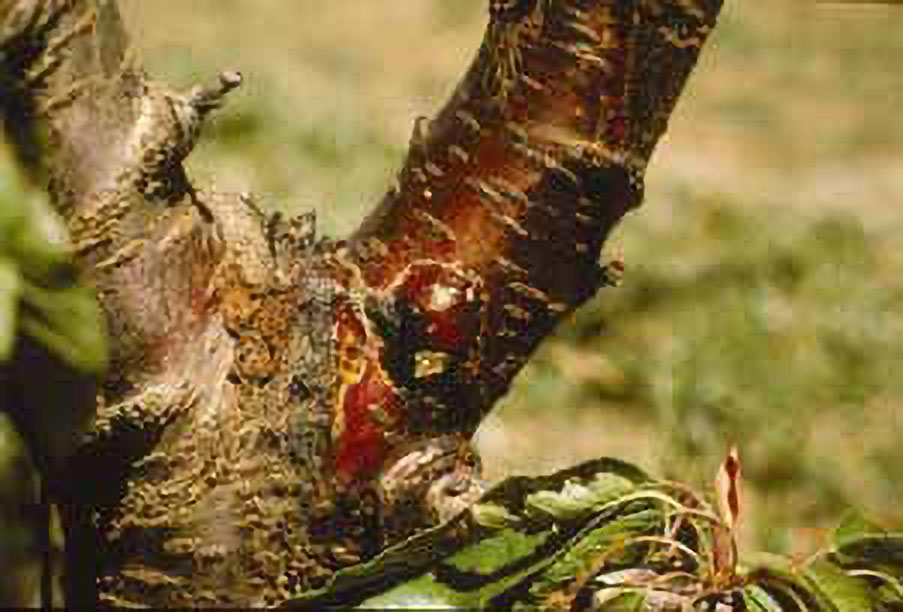
Bacterial spot
Bacterial spot is more common on plums but can infect other stone fruits. This disease can affect buds, leaves, fruit and shoots. Infected leaves can take on a ‘shot-hole’ appearance and fall prematurely (Figure 2).
Fruit can develop small spots with deep cracks and fall before harvest. This disease is favoured by wet conditions between blossom and petal fall, orchards exposed to windy, wet conditions, and low-lying areas with poor air drainage.
To prevent bacterial spot:
- avoid planting susceptible varieties
- avoid low-lying areas with poor air drainage
- plant windbreaks
- apply protective sprays when conditions favour the disease.
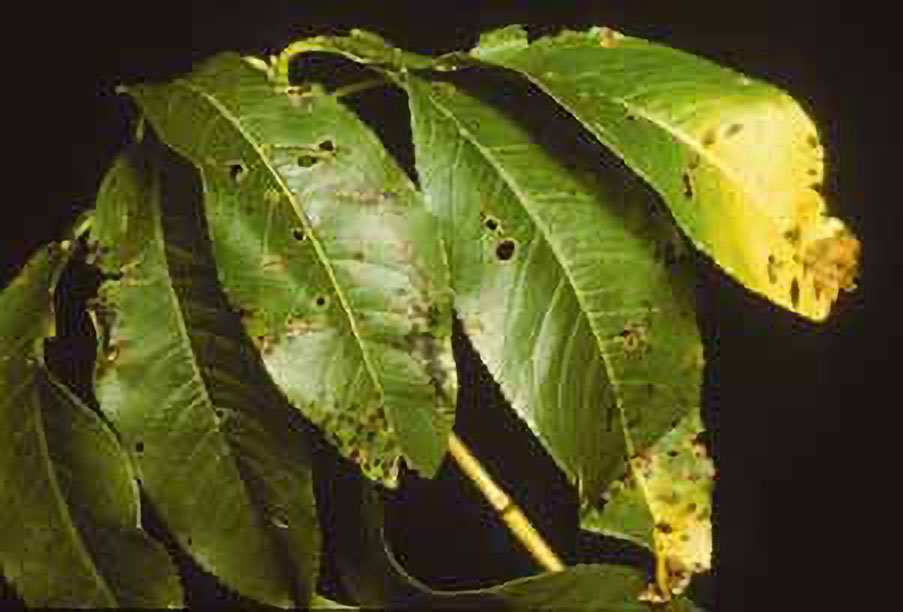
Brown rot
Brown rot is a major disease of stone fruits in Australia. Infected fruit develop small brown spots, which produce grey powdery spores that can cover most of the fruit (Figure 3), which can eventually rot and remain mummified on the tree. Dormant infections may not show symptoms in the orchard but can develop on fruit in storage.
Blossom blight, caused by a closely related fungi, can affect leaves, shoots and blossoms, which turn brown and die.
The spores are spread by wind, rain splash and insects. This disease is favoured by warm, wet conditions around blossom, carry-over infection from previous seasons and plant injury from hail, wind or sunburn.
To prevent brown rot:
- remove and destroy fallen fruit, infected twigs and mummified fruit
- control the insects that spread the disease (e.g. Carpophilus beetle)
- improve airflow through the orchard, for faster drying of fruit
- apply protective sprays when conditions favour the disease
- use postharvest fungicide dips
- cool fruit as soon as possible after harvest
- store and transport fruit at 0 °C.
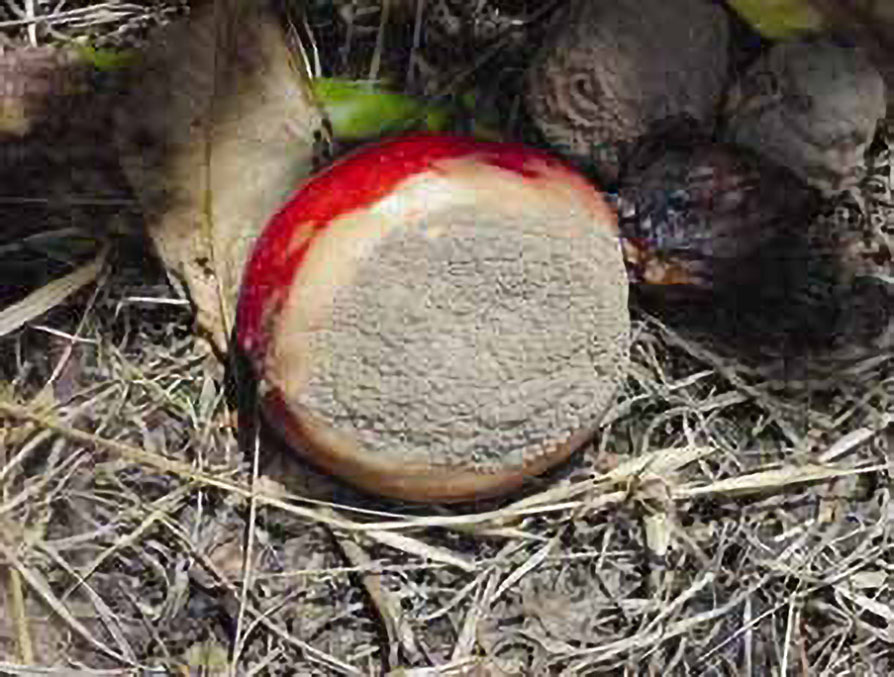
Crown gall
Crown gall is considered a minor root disease of stone fruit. It is caused Agrobacterium tumefaciens, a common soil-borne bacterium that can attack a wide range of fruit trees. Found in most Australian fruit growing areas, except Western Australia, the disease causes tumour-like swellings (galls) on roots and around the crown (Figure 4). As the galls age, they become dark brown to black, hard, rough and woody.
Infected trees show nutrient deficiency symptoms (e.g. wilting, stunting) and produce dry, poorly- developed fruit.
This disease is favoured by waterlogged soil, wounds to roots caused by insects, machinery or pruning, and infected nursery stock.
To prevent crown gall:
- plant disease-free nursery stock
- apply the biological control agent Nogall® to the roots before planting
- avoid planting in waterlogged soils
- avoid damage to roots.
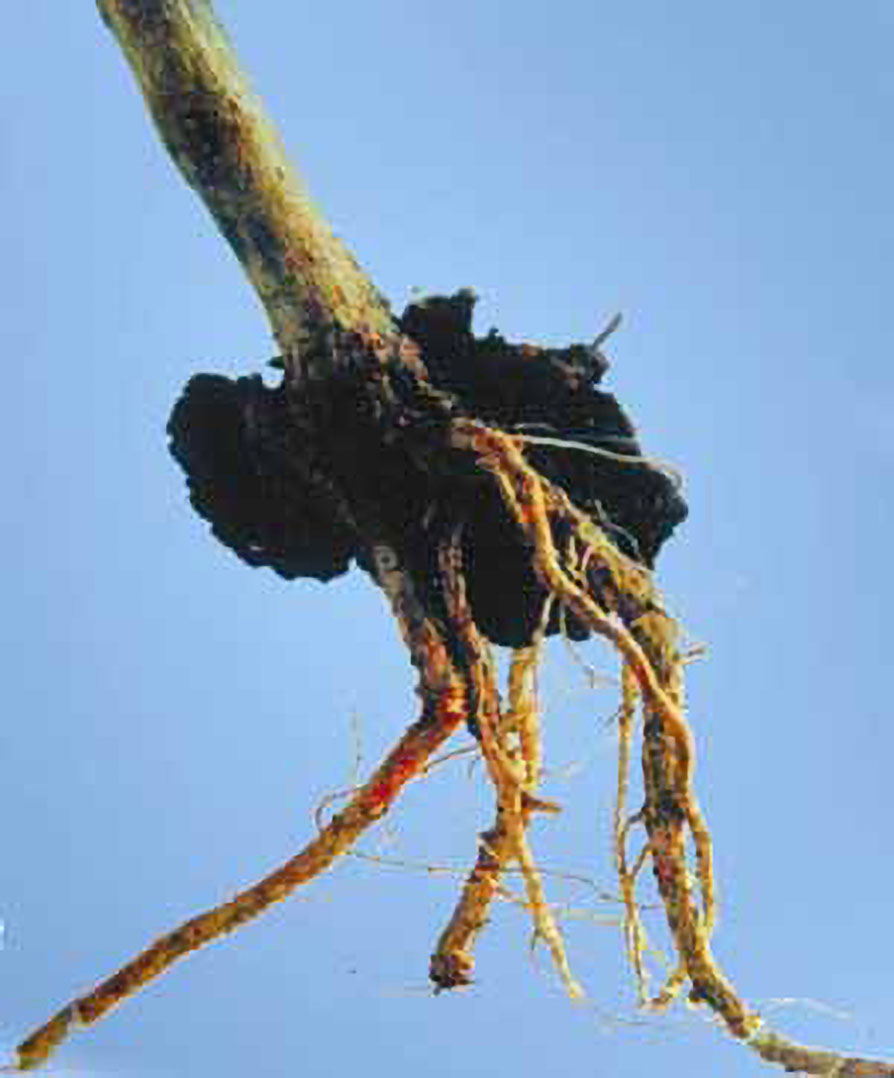
Freckle
Freckle is considered a minor disease of stone fruit, but can be serious under favourable conditions, or following poor control in previous seasons. This disease mostly affects fruit, but lesions can also appear on leaves and twigs. An early symptom on fruit is brown-black spots appearing around the stem end (Figure 5). Raised lesions on twigs are superficial and do not affect the tree.
This disease is favoured by wet conditions and temperatures of 18–24 °C during the first 4 weeks after shuck fall.
To prevent freckle:
- improve airflow in the orchard
- remove and destroy infected fruit and twigs
- monitor for early signs of the disease
- apply protective sprays.
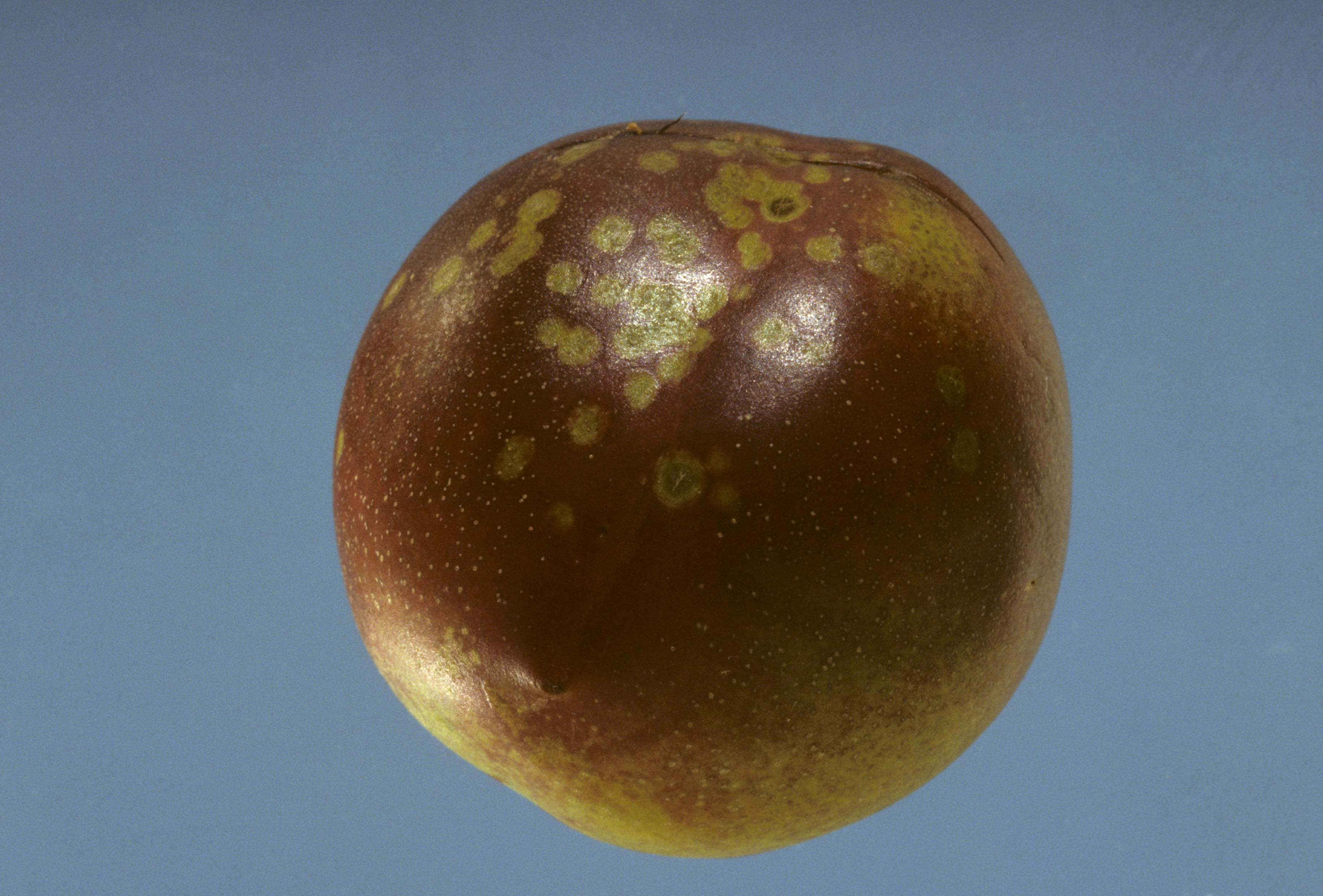
Leaf curl
Leaf curl is considered a minor disease of stone fruit but can be serious under favourable conditions. This disease can affect leaves, shoots and fruit. The leaves thicken, take on a pink-red colour and become curled (Figure 6). Infected shoots become stunted. Infected fruit has raised areas that show early red colour and the fruit can drop before maturity.
This disease is favoured by warm and humid conditions during bud swell and carry-over infection from previous seasons.
To prevent leaf curl:
- apply protective sprays at early bud swell
- base spray program on infection levels from previous seasons
- treatment is not effective after leaf symptoms appear.
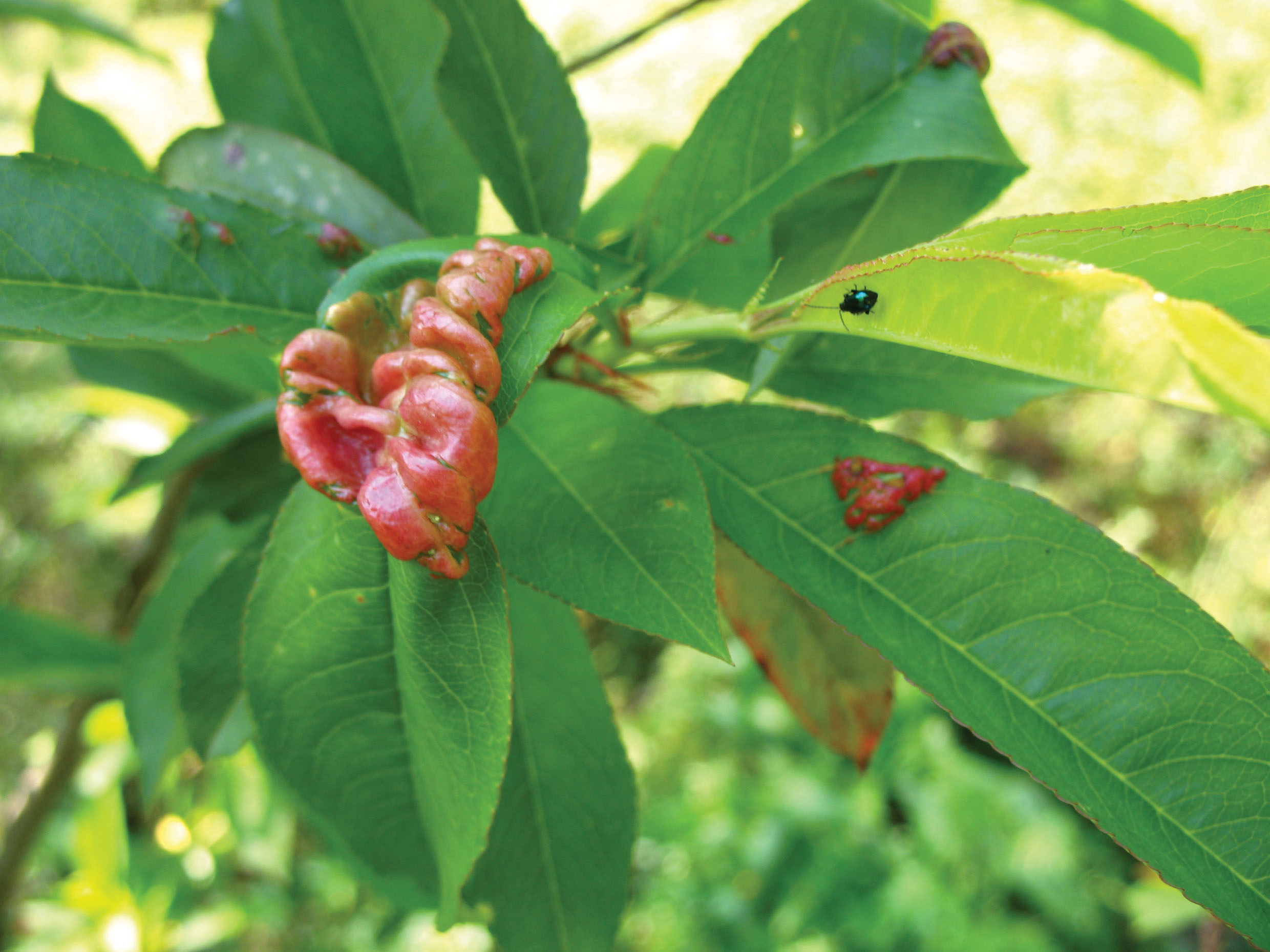
Rust
Rust is considered a minor disease of stone fruit but can be serious under favourable conditions or following poor control in the previous season. This disease affects leaves, shoots and fruit. Leaves infected by rust develop rusty brown spots on the underside, with powdery masses of spores.
In severe infections, leaves take on a brown, dusty appearance and can fall prematurely. Infected fruit develop small, depressed spots with reddish centres (Figure 7).
This disease is favoured by wet conditions and temperatures between 13 and 25 °C and carry-over infection from previous seasons.
To prevent rust:
- improve airflow in the orchard
- avoid low-lying areas with heavy dews
- monitor weather conditions that favour the disease
- remove and burn diseased wood and leaves during pruning
- apply protective sprays.
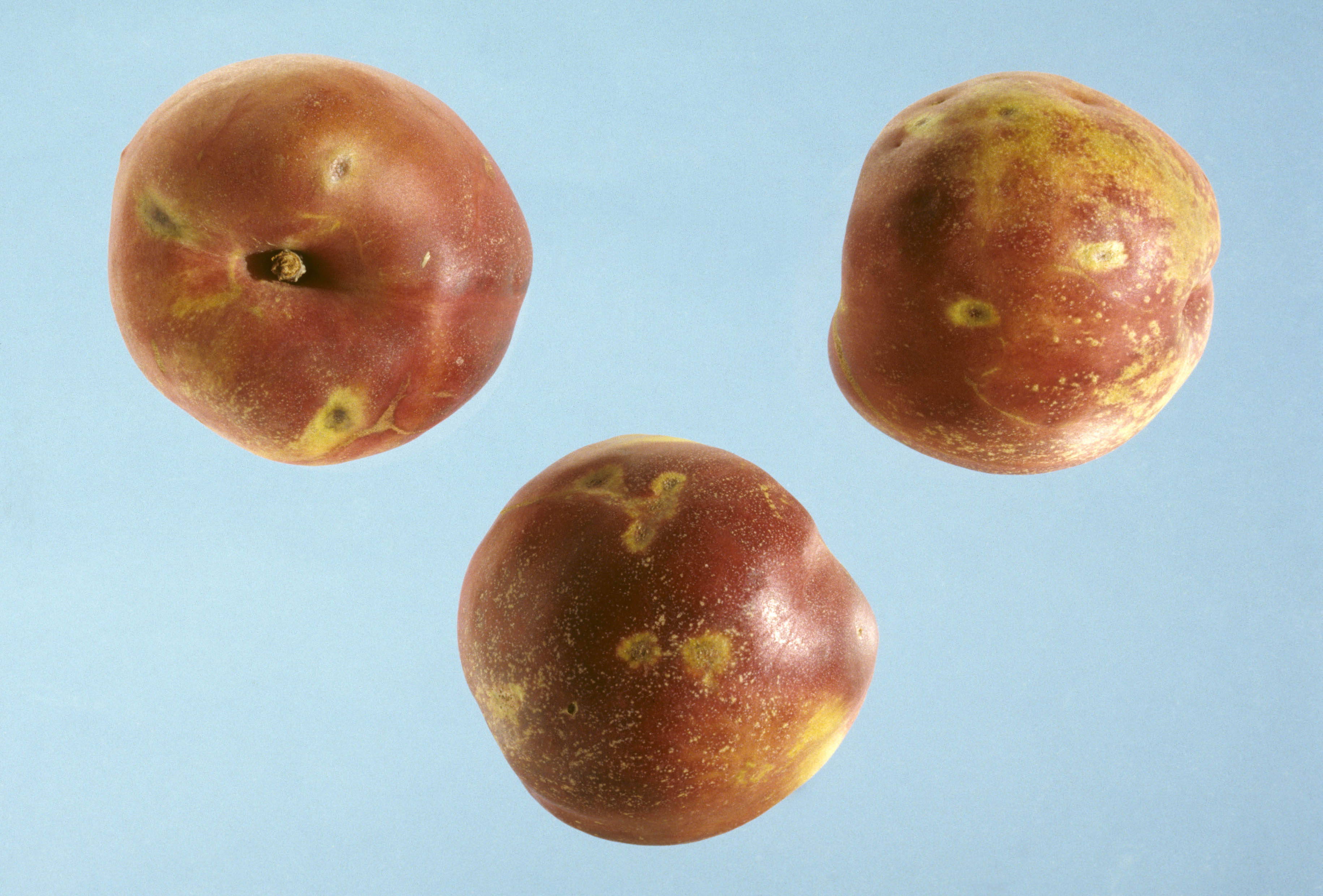
Shot-hole
Shot-hole is considered a minor disease of stone fruit that can cause premature leaf fall under favourable conditions. It can affect leaves, buds, shoots and fruit. Affected leaves develop reddish spots with purplish margins; the centres fall out, giving a ‘shot-hole’ appearance (Figure 8). Shoots and fruit develop similar lesions to those on the leaves.
This disease is favoured by wet conditions in late winter and spring. Rain and wind aid the spread of infection spores.
To prevent shot-hole:
- prune out and burn infected wood
- promote early leaf fall
- apply protective sprays.
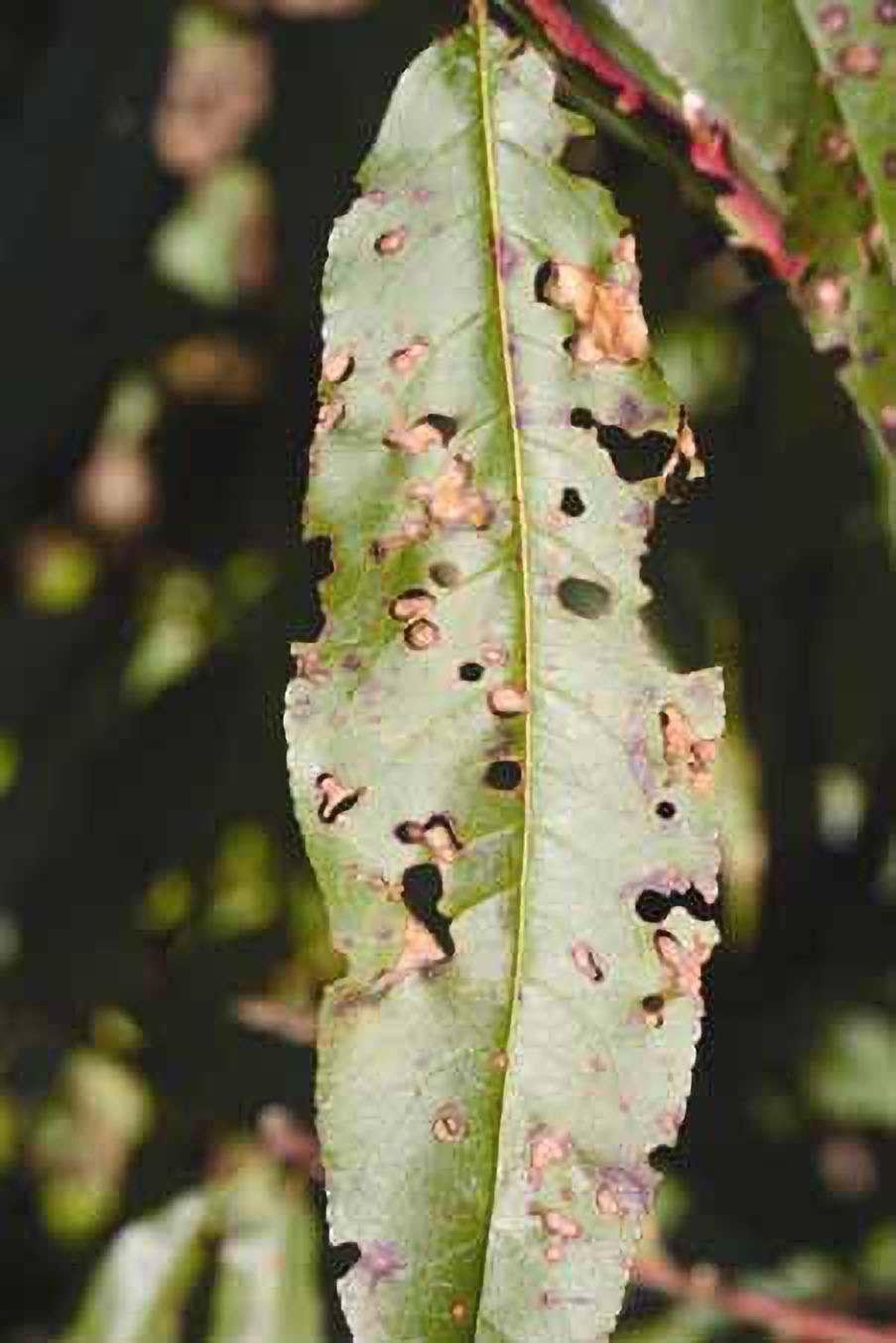
Summer canker
Summer canker is considered a minor disease of stone fruit but can be serious under favourable conditions. It can affect the roots and lower parts of the tree. The affected roots are killed, causing the tree to remain stunted, with leaf yellowing and early leaf drop. This canker can develop collar rots at ground level, developing firm, jelly-like, oozing lesions (Figure 9).
Symptoms are similar to bacterial canker, except that summer canker occurs during summer, with lesions starting at the base of the tree and moving up, while bacterial canker occurs mainly in late autumn and the lesions occur in the upper part of the tree.
This disease is favoured by waterlogged soil and poor drainage.
To prevent summer canker:
- improve soil drainage
- plant trees on raised beds
- do not over water
- apply registered sprays.
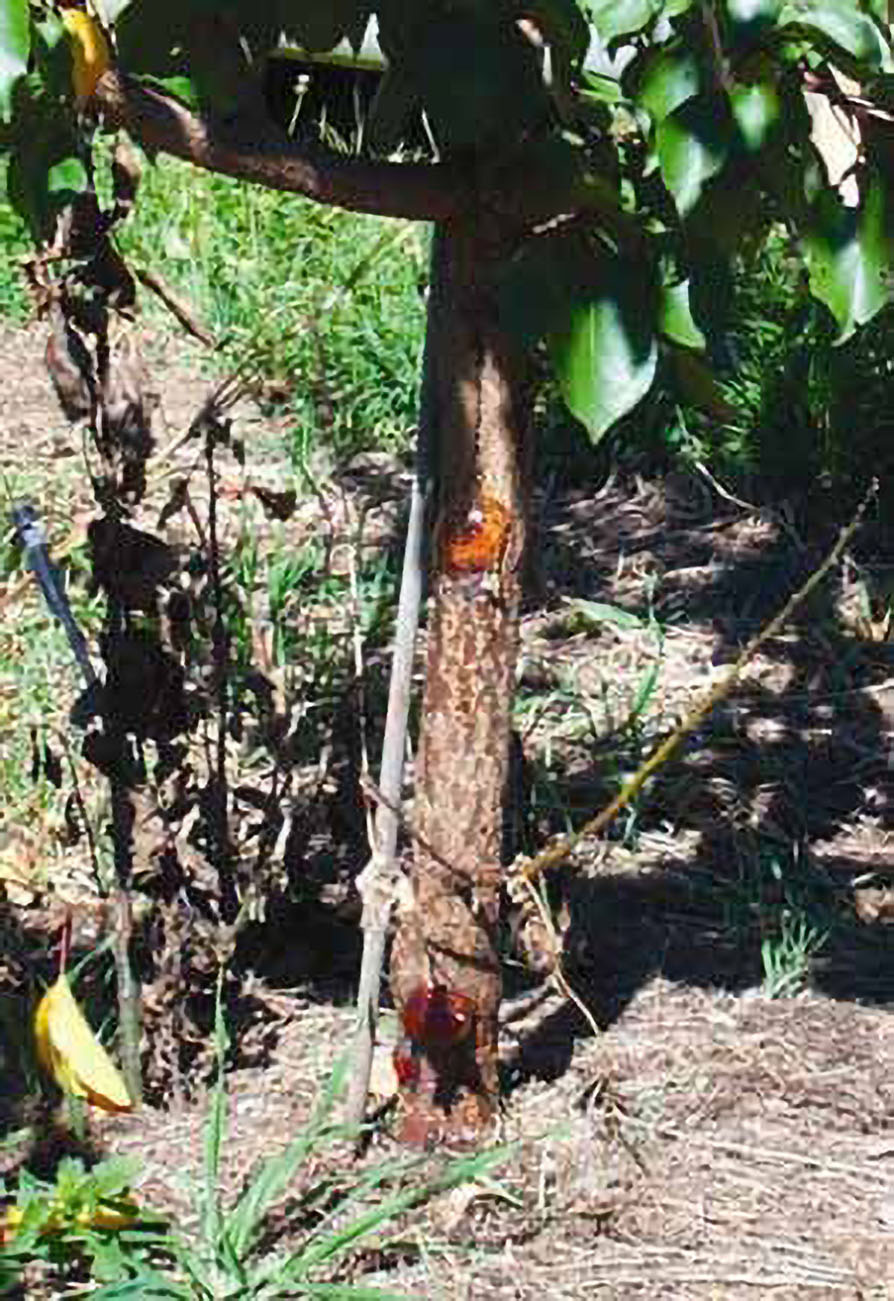
Postharvest diseases
Postharvest diseases can cause serious fruit losses. Symptoms can appear during handling, storage, transport, at retailing and after sale to consumers. The most common symptoms are fruit breakdown and fruit rot. The two main diseases causing fruit losses are transit rot and grey mould (Figure 10).
This postharvest disease is favoured by fruit damage during harvest and packing, picking fruit when overripe, storage of fruit at the incorrect temperature and the incorrect use of postharvest dips.
To prevent postharvest diseases:
- pick fruit at correct maturity
- avoid fruit damage during harvest and handling
- cool fruit as soon as possible after harvest
- use postharvest dips
- store and transport fruit at 0 °C.
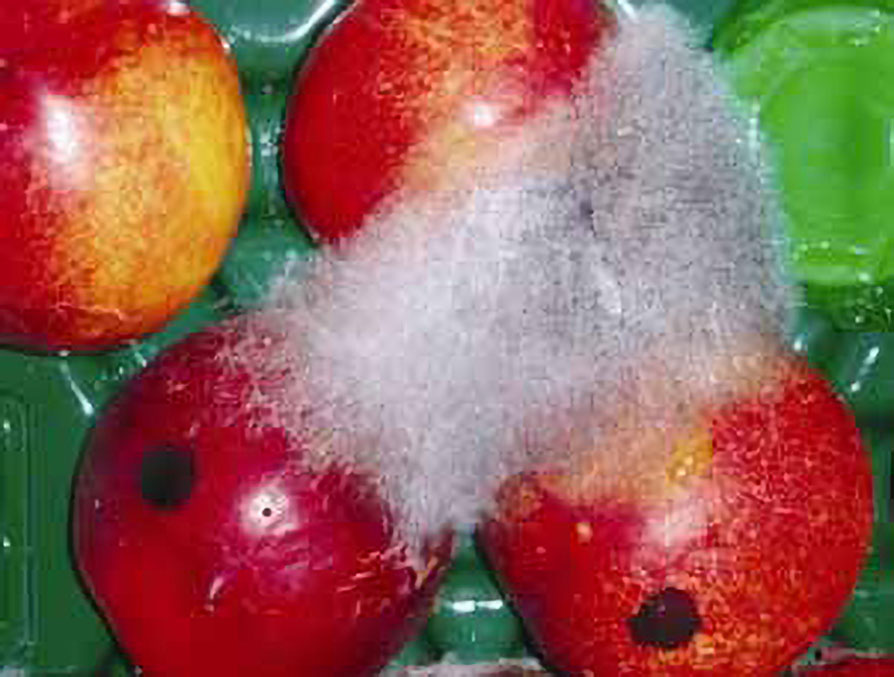
More information
Fore more information on pests and diseases of stone fruit, see the Orchard plant protection guide.

